Yauhtli (Mexican tarragon) the Dream Herb of Ayauh

Affiliate Disclaimer
This website is supported by its audience and contains affiliate links. An affiliate link means I may earn advertising or referral fees at no extra cost to you if you make a purchase through these links. (read more)
I am not a medical professional. Rewild + Grow was created for informational and historical purposes only. Statements have not been evaluated by the FDA and are not intended to diagnose, treat, cure, or prevent any disease. Consult your healthcare provider if you have any concerns, particularly if you have any serious medical conditions, are pregnant, breastfeeding, or taking prescriptions.
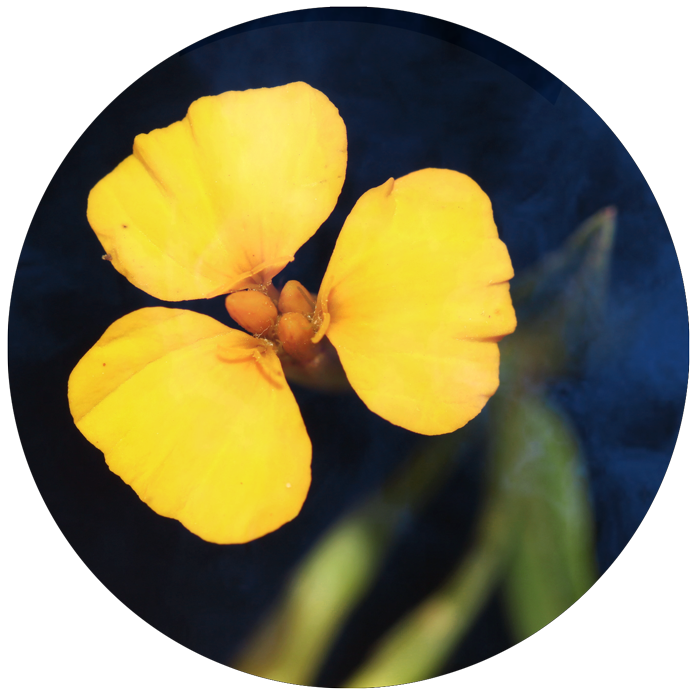
The dream herb of the mist.
Oneirogenic
Protective
Cleansing
Nervine Tonic
Digestive Aid
Yauhtli
Commonly known as Mexican tarragon.
In the highlands of Mexico, nestled between the towering peaks of the Sierra Madre, there grows a plant of extraordinary mystique and magic.
This plant is known as Yauhtli, or by its more familiar name – Mexican tarragon, and it has woven its way into the tapestry of Mexican mythology and culture for centuries. Its sweet anise-like flavor has enchanted many savory dishes and its medicinal properties have helped heal the bodies and minds of people across the Americas. Many believe its spirit, Ayauh, has the power to protect against malevolent beings and the ability to heighten one’s senses, granting the potential to perceive beyond the veil.
NATIVE LANDS
Mexican tarragon, also known as Yauhtli, Pericón, the Mexican mint marigold, or by its Latin name Tagetes lucida, is a species of marigold native to Central America and Mexico. It can be found in a variety of ecosystems, including grasslands, open woods, and disturbed areas, often found growing along roadsides and in fields.
The herb has been used by Mesoamericans including the Aztecs in religious and spiritual practices, traditional medicine, dyes, and food. When the Spanish colonizers noticed the similarity in flavor and aroma between Mexican tarragon and French tarragon, which they were familiar with, they began to refer to the plant as “tarragon.” After the Spanish conquest, Mexican tarragon was introduced to Europe, where it became popular in cuisines and medicine.
Fire Herb
Born of the arid Earth and hardened by drought, Mexican tarragon embodies the fierce and unyielding nature of fire. It i s widely identified as a powerful psychoactive strain of the marigold flower, first documented by the Aztecs. They used the herb in fire magic, particularly in a ritual incense they referred to as yyauhtl. This name was derived from the Aztecan word ujana, meaning “to offer incense in sacrifices.”
The Aztecs referred to Tagetes lucida as yauhtli, ”the dark one.” They would powder the herb and throw or blow it into the faces of their sacrificial victims to ‘dull their senses’. This would be shortly before cutting out their hearts and burning them on coal as a sacrifice to the god of fire, Huehueteotl. Apart from its ties to this gruesome ritual in history, this herb has continued to be a source of healing and is one of the most widely used holistic remedies and spices in Meso-America. Today, a Mexican tarragon mixture is smoked by the Huichol people – recreationally as well as ceremonially – in long, thin corn husk cigarettes, or clay pipes. Either with strong native Indian tobacco, or alone.
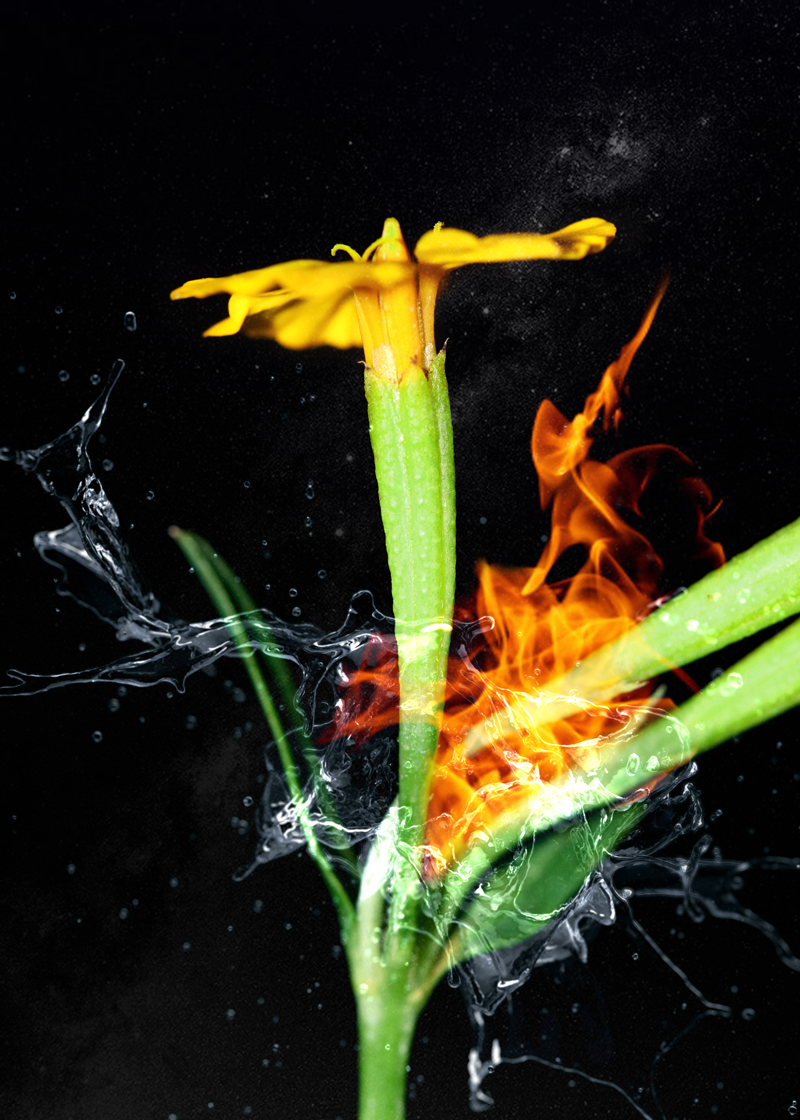
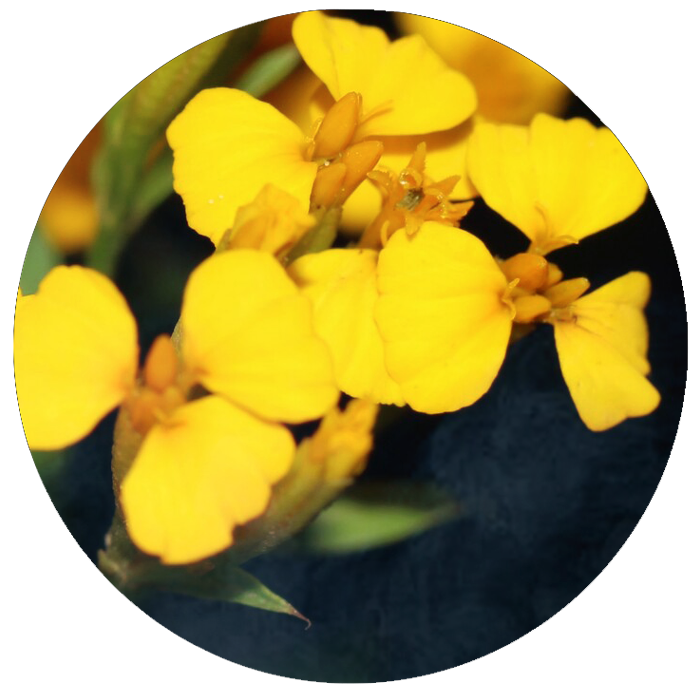
MYTHIC
CHARACTER
ELEMENT
Water + Fire
POLARITY
Positive (Yang)
INNER GUIDE
Heart
ASSOCIATIONS
Dreams
Cleansing
Protection
Grounding
Intuition
Creativity
Water Herb
ONEIROMANCY
The practice of interpreting dreams. syn. dreamwork

MAKE YAUHLTI INCENSE, TEA, OR TINCTURE BLEND FOR DREAM EFFECTS.
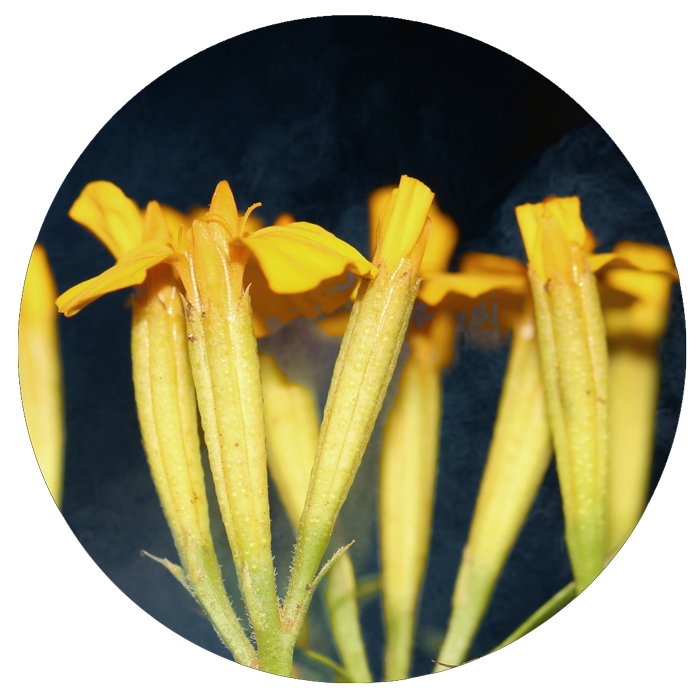
Mexican tarragon has a reputation for offering great depth and potency to dreams. It is included in the Codex de la Cruz-Badiano under its Nahuatl name quauhyyauhtli, although it is often referred to as just yauhtli (cloudy plant/the fog). The plant is associated with Tlaloc, the sacred energy of rain, as it is often the first plant to sprout from the Earth after rainfall.
In the ancient Aztec Nahuatl language the word “Ayauh” means mist. In one hand, the Aztec water goddess Chalchiuhtlicue held an ayauhchicahuaztli, a rattle stick made from mist. While several deities possessed rattle sticks, only the rain gods specifically had mist rattle sticks, or ayautli (a[tl]-yauhtli, “water Tagetes lucida incense”), which was believed to be the droplets of smoke from burning Mexican tarragon. To them, the mist was conceived of as droplets of smoke.
The mist, or Ayauh, is often associated with other realms, including the realm of dreams and the unconscious mind. The spirit is often invoked during dream work and spiritual practices where the water energy of mist is said to bring clarity to the dreamer’s mind, offering support and guidance in exploring and interpreting dream symbolism.
We see that magic in the plant’s essential oils, which contain compounds such as estragole and methyl chavicol. Scientist suspect these compounds are responsible for altering brain activity during sleep and enhancing dream activity. Others suggest that the plant’s overall calming and relaxing effects on the body and mind may indirectly contribute to more vivid and memorable dreams. The herb has a long history of use in traditional medicine to treat anxiety and insomnia, which are conditions that can interfere with dream quality. Its delicate and soothing flavor profile is associated with feelings of relaxation, mental clarity, and groundedness. Some of its essential oils, such as eucalyptol and camphor, are believed to promote a sense of peace and tranquility, helping to reduce anxiety, stress, and tension.
DREAM BREW
Mexican tarragon leaves and flowers can be brewed into a relaxing nighttime tea to experience its oneirogenic effects. It blends well with other herbs such as mint, chamomile, and lemon balm.
CLEANSING HERB
As a limpia plant, Mexican tarragon can help to release heavy emotions like fear, anger, bitterness, resentment, or jealousy. It is also believed to cleanse the body of toxins. Some even use it as a natural remedy for headaches because it helps remove the trapped energy causing the discomfort.
Ayauh, known as a water spirit, is deeply intertwined with Mexican tarragon. Ayauh is believed to impart nourishment, purification, and healing to those who respect her. The plant may be seen as a conduit for this energy, allowing us to tap into the deep well of emotions within us, and wash away stagnation by allowing it to flow through us.

Wild
Medicine
In traditional medicine, Mexican tarragon is considered to have a warming energy.
Its abilities are said to kindle the digestive fire and set ablaze the body’s circulation. In Aztec culture, because it was dedicated to the Tlaloc (rain) it was responsible for ‘wet’ illnesses like colds and rheumatism. In the sacred tradition of Ayurvedic medicine, Mexican tarragon’s flavor is revered for its ability to ignite the flame within, bringing balance to the Kapha and Vata doshas.
CIRCULATION BOOSTING
The plant’s warming energetics are known help improve circulation promoting overall warmth in the body. This makes it useful for conditions related to coldness and dampness, such as arthritis, and respiratory ailments like coughs, bronchitis, and asthma. It contains compounds like eucalyptol and anethole, which have anti-inflammatory and pain-relieving effects that help alleviate discomfort and stiffness in joints and muscles. Its warmth helps clear congestion in the lungs and promotes healthy breathing. It is also commonly useful in treating digestive complaints such as empacho, stomach aches, colic, and diarrhea.
The herb’s circulation-boosting properties also make it particularly effective at soothing and healing irritated skin. Traditionally, it has been applied topically in the form of a poultice or salve, with the latter proving especially beneficial for chronic conditions like eczema and psoriasis.
Mexican tarragon’s aphrodisiac properties are believed to positively influence the hormonal system. Rich in phytoestrogens, plant-based compounds that emulate the effects of estrogen, this herb supports hormonal balance, eases symptoms of PMS, promotes regular menstruation, and enhances libido.
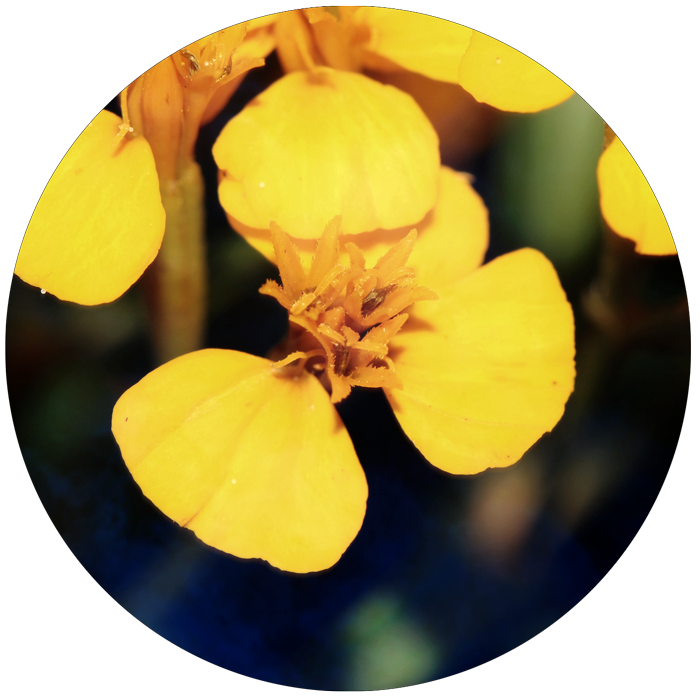
HEALING
PROFILE
ENERGETICS
Warming
Drying
Calming
FLAVOR
Sweet
AROMA
Aromatic
INDICATIONS
Indigestion
Menstrual Cramps
Joint Pain
Fever
Headaches/Migraines
Bronchitis
Coughs/Colds
Rashes
Eczema
PARTS USED
Aerial Parts
Roots
CAUTION
When taken as medicine avoid during pregnancy and breastfeeding.
CULINARY HERB
The leaves carry notes of licorice, with hints of sweetness and a mild peppery undertone. They are an important flavoring of ‘chocolatl’, the foaming cocoa-based drink of the Aztecs that was used as a ceremonial beverage.
To incorporate the herb into your diet, the fresh leaves can be added to salads, salsas, and soups, or used as a garnish. It is commonly used to flavor traditional Mexican dishes such as moles, salsas, and tamales. It also provides complimentary savory flavors to egg and meat dishes.
Cultivate
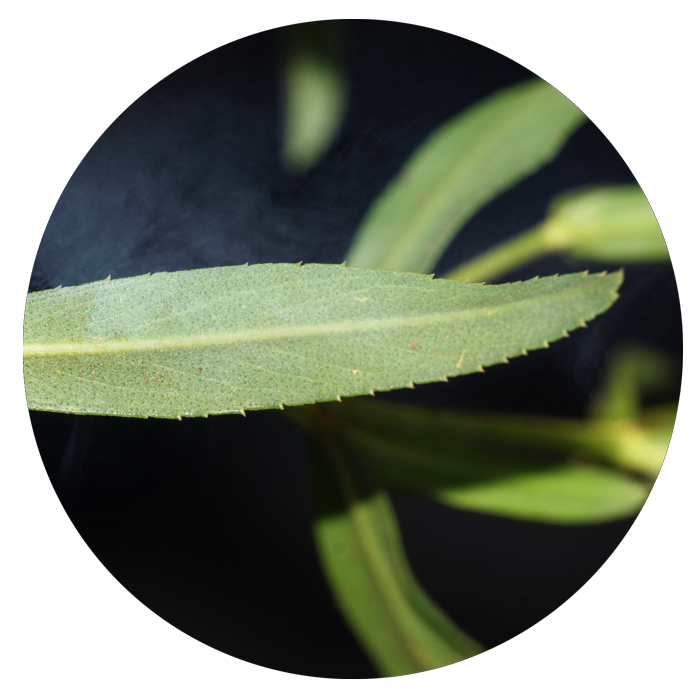
The leaves are most flavorful when harvested in the morning.
Mexican tarragon can be grown as a perennial is USDA growing zones 9-11, or as an annual in colder zones. The plant’s leaves and flowers can be harvested throughout the growing season until the first frost. Preserve the dried herb for teas, tinctures, and seasoning.
exit the matrix.
SOURCES
1. Michaels, Frances. “Mexican Tarragon Growing Information.” Green Harvest.
2. R. K. Siegel, P. R. Collings, & J. L. Diaz. (1977). On the Use of Tagetes lucida and Nicotiana rustica as a Huichol Smoking Mixture: The Aztec “Yahutli” with Suggestive Hallucinogenic Effects. Economic Botany, 31(1), 16–23.
3. Dehouve, Danièle. “The Rules of Construction of an Aztec Deity: Chalchiuhtlicue, the Goddess of Water.” Ancient Mesoamerica, vol. 29, no. 1, 2018, pp. 129-142. Cambridge University Press, doi: 10.1017/S0956536118000082.
4. “The Encyclopedia of Psychoactive Plants” by Christian Rätsch
5. “The Encyclopedia of Herbs and Spices” by P. N. Ravindran
8. Antifungal and Antibacterial Activities of Mexican Tarragon (Tagetes lucida) by Carlos L Cespedes-Acuña and Jose Guillermo Avila


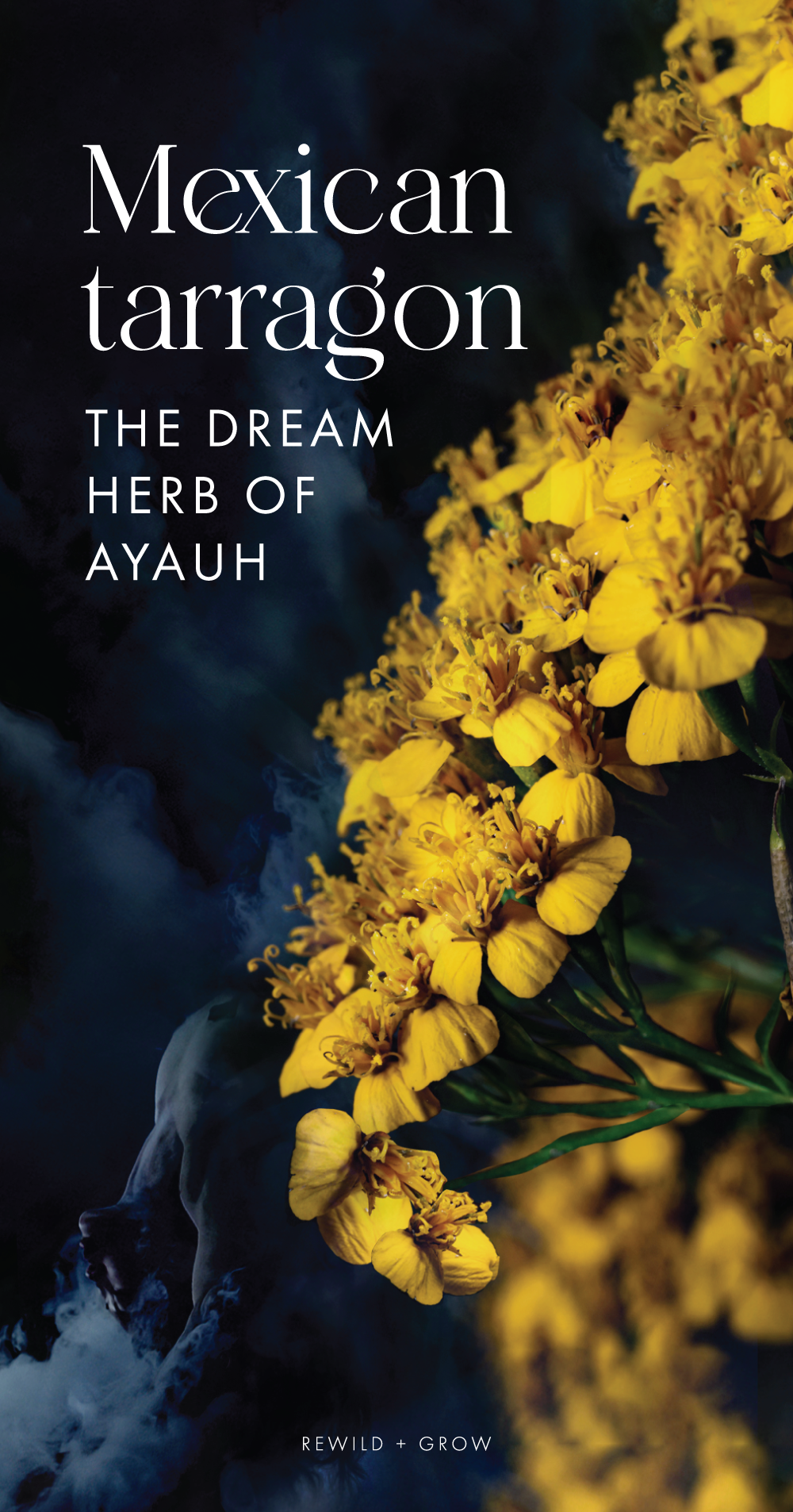





0 Comments